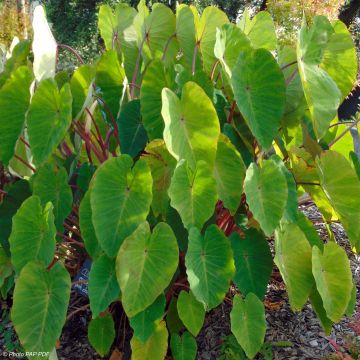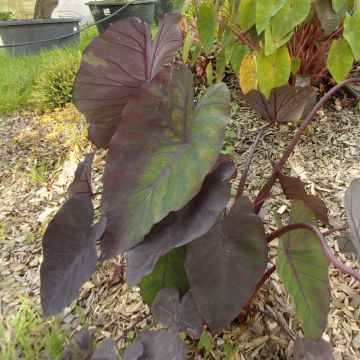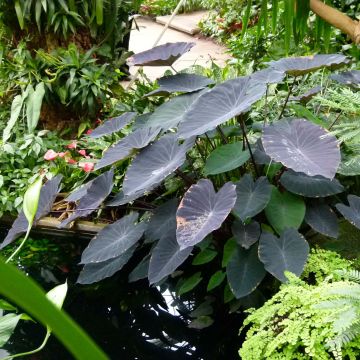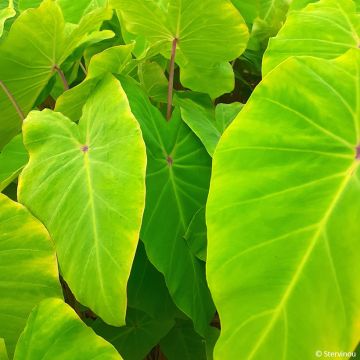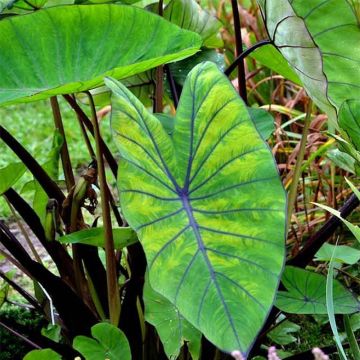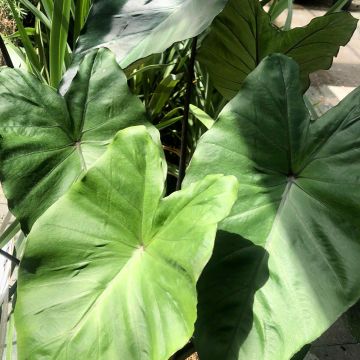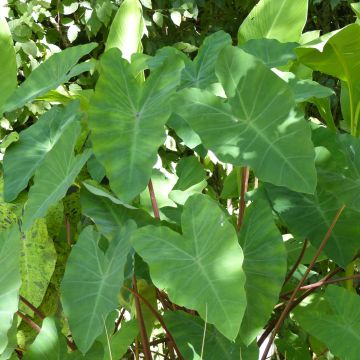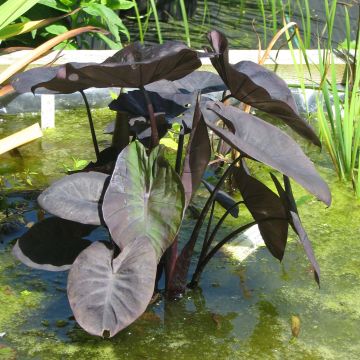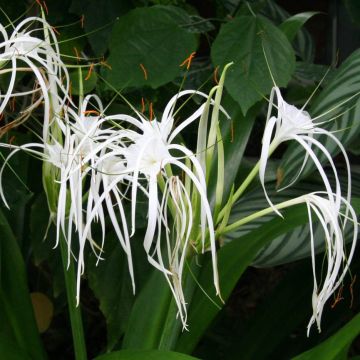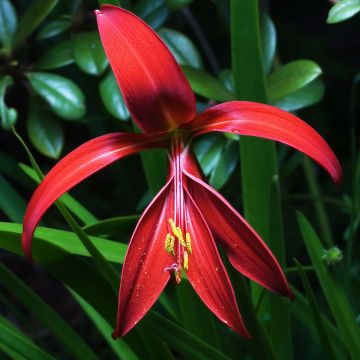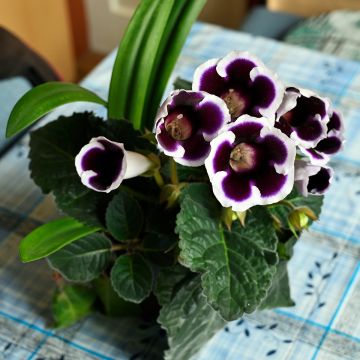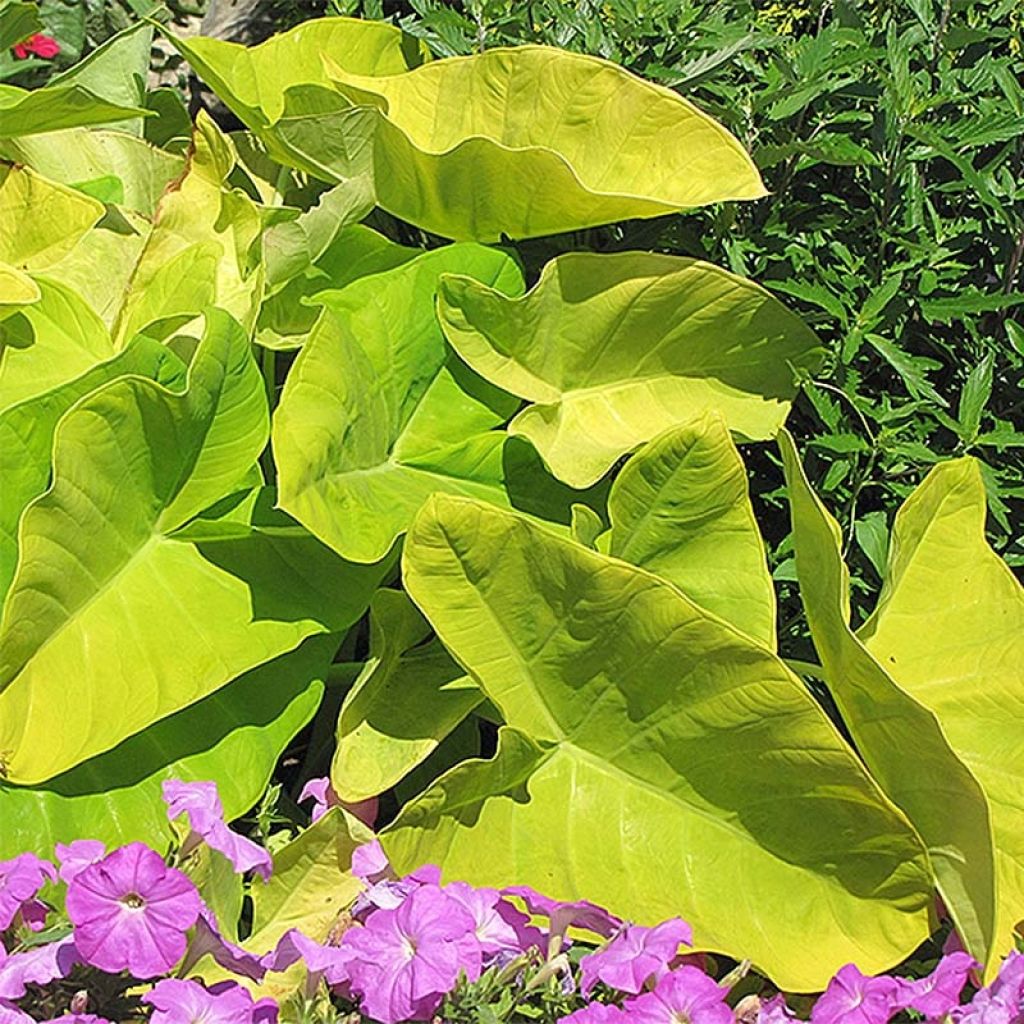

Colocasia Maui Gold - Taro
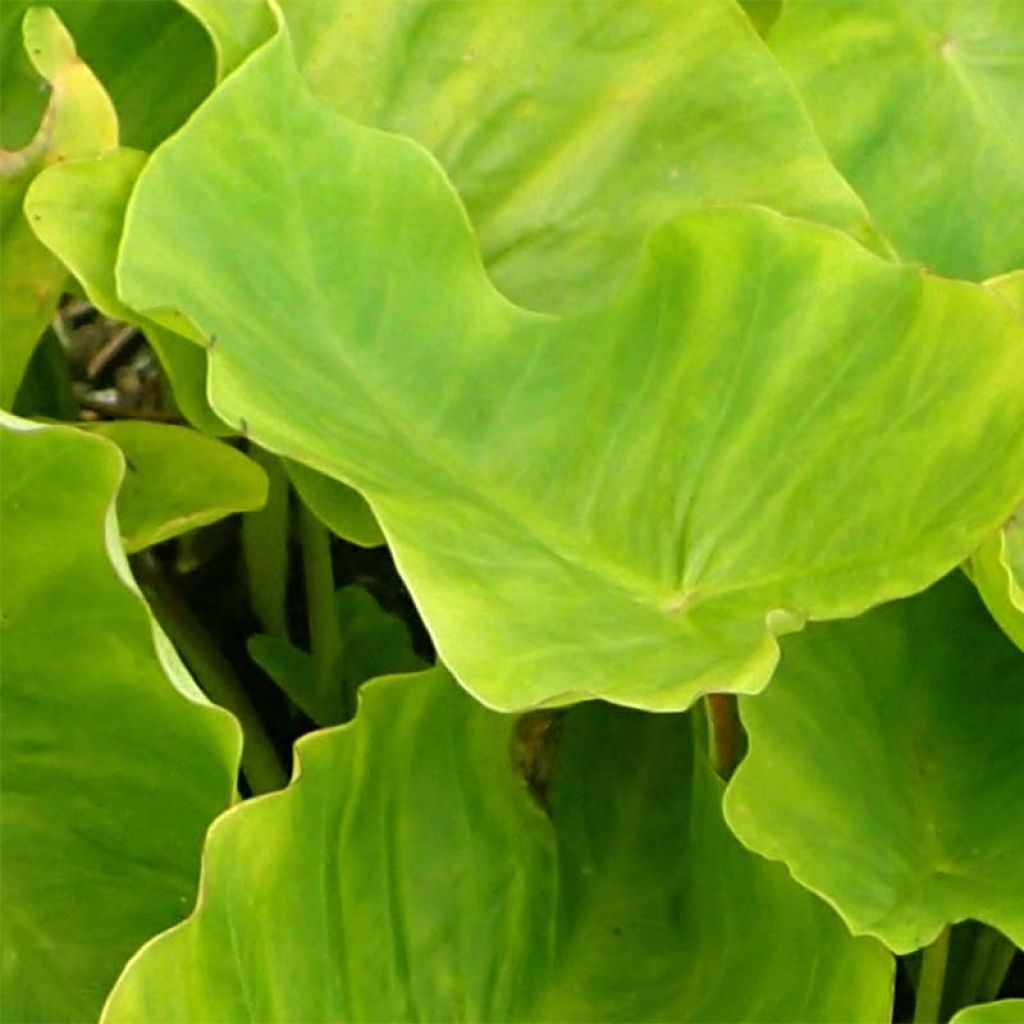

Colocasia Maui Gold - Taro
Colocasia Maui Gold - Elephant Ears
Colocasia x esculenta Maui Gold
Taro, Elephant's Ear, Dasheen, Eddoe
Special offer!
Receive a €20 voucher for any order over €90 (excluding delivery costs, credit notes, and plastic-free options)!
1- Add your favorite plants to your cart.
2- Once you have reached €90, confirm your order (you can even choose the delivery date!).
3- As soon as your order is shipped, you will receive an email containing your voucher code, valid for 3 months (90 days).
Your voucher is unique and can only be used once, for any order with a minimum value of €20, excluding delivery costs.
Can be combined with other current offers, non-divisible and non-refundable.
Why not try an alternative variety in stock?
View all →This plant carries a 6 months recovery warranty
More information
We guarantee the quality of our plants for a full growing cycle, and will replace at our expense any plant that fails to recover under normal climatic and planting conditions.
Would this plant suit my garden?
Set up your Plantfit profile →
Description
Colocasia 'Maui Gold' is a spectacular perennial that thrives in moist soil. It bears immense golden-green leaves that are carried by a very pale green petiole. This exotic plant will create a setting conducive to escapism on your patio or by a pond. It can be grown in pots in most regions, which can be brought indoors during winter. Gardeners fortunate enough to live in the right climate can try planting its large tubers directly in the ground, in acidic to neutral, rich, moist but well-drained, soil, in non-burning sunlight or partial shade. However, some protection will still be necessary for this plant, as it is sensitive to temperatures below -5 to -7°C (23 to 19.4°F).
Colocasia esculenta, also known as taro, is a cousin of arums. It belongs to the Araceae family. It produces very large cordate or sagittate leaves (meaning arrow-shaped or lance-shaped), which can exceed 60cm (24in) in length, at the end of thick and erect petioles. These immense leaves give the plant its other name of elephant ears. The plant multiplies and spreads with its large fleshy rhizomes which are rich in starch. A well-established clump can reach over 1.5m (5ft) in height and width. Originally from tropical Asia or India, taro is now extensively cultivated in all tropical and subtropical regions. It has been used for hundreds of years for its highly nutritious tubers, which local populations consume cooked, with a taste similar to sweet potatoes ("esculenta" also means "good to eat" in Latin). The young leaves are also edible, but be careful, as they are rich in calcium oxalate and therefore not recommended for individuals prone to kidney stones. In the most favourable regions, flowering sometimes occurs on mature plants in the form of summer yellow spathes
The 'Maui Gold' variety presents superb leaves with a chartreuse green lamina that turns golden green. The petiole is a pale green that is almost white. Its development is moderate and it will reach approximately 1m (3ft) in height and 80cm (31in) in width. It belongs to the Royal Hawaiian series, obtained by Hawaiian hybridiser John Cho. Plants in this series are robust, well-branched, and resistant to leaf spot disease.
'Maui Gold' is sensitive to frost. Literature indicates that it is resistant to very brief frosts of around -5°C (23°F), but you really have to live in a region with a very mild climate to be able to plant it directly in the ground. It likes rather acidic, very rich and light soil that is moist but well-drained. However, it is easy to grow in a large pot that you can place on a patio or near a pond. Keep the substrate constantly moist to avoid leaf desiccation. This will give you an extraordinary exotic touch! Of course, the pot will need to be stored in a cold greenhouse during winter. Ensure good drainage to prevent rhizome rot. The substrate should remain just moist over winter, but no more. You can also grow it as an indoor plant in a minimally heated and very bright conservatory, but you will need to be more careful about the possible arrival of red spider mites, which can proliferate if the air is too dry. Taro plants are heavy feeders, so provide nitrogen fertiliser in your pots and repot the plants occasionally to renew the substrate.
For exotic scenes, grow it with other exuberant plants, such as tetrapanax, gunnera, hardy palms like Chamaerops humilis and Trachycarpus wagnerianus, or even the hardy banana tree Musa basjoo. Most of these plants can be planted in the ground in mild climates.
Report an error about the product description
Colocasia Maui Gold - Elephant Ears in pictures
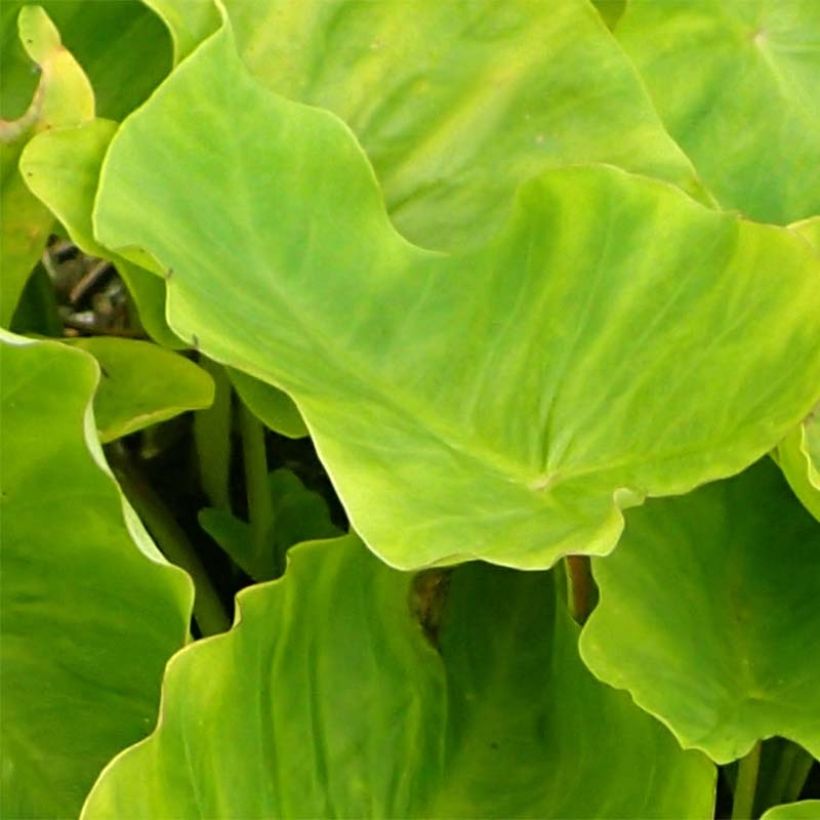

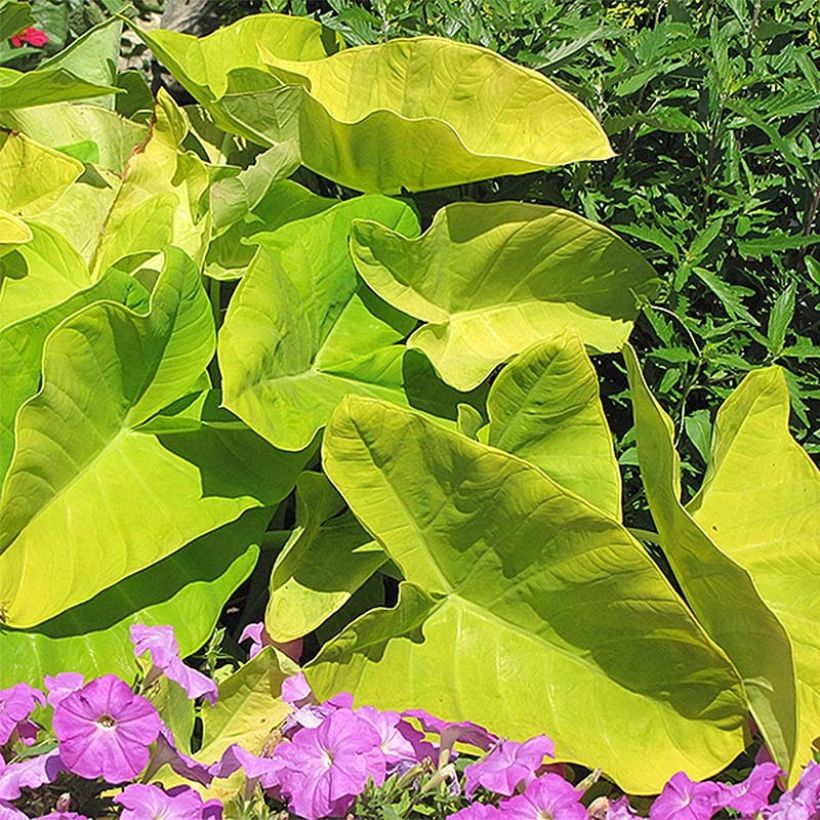

Plant habit
Flowering
Foliage
Safety measures
Botanical data
Colocasia
x esculenta
Maui Gold
Araceae
Taro, Elephant's Ear, Dasheen, Eddoe
Southeast Asia
atteintescutaneomuqueuses
Cette plante peut provoquer l'apparition de réactions cutanées indésirables, une atteinte des yeux, ou des difficultés respiratoires si elle est ingérée.
Ne la plantez pas là où de jeunes enfants peuvent évoluer. Evitez tout contact avec la peau: privilégiez l'emploi de gants pour la manipuler. En cas de contact, lavez-vous soigneusement les mains et rincez abondamment à l'eau la zone concernée. Lavez les vêtements entrés en contact. En cas de réaction cutanée, contactez votre médecin ou le centre antipoison le plus proche de chez vous. En cas d'atteinte étendue ou de difficultés respiratoires, appelez immédiatement le 15 ou le 112.Pensez à conserver l'étiquette de la plante, à la photographier ou à noter son nom, afin de faciliter le travail des professionnels de santé.
Davantage d'informations sur https://plantes-risque.info
Other Colocasia
View all →Planting and care
It is a non-hardy perennial that is typically grown as a greenhouse or conservatory plant. Place your Colocasia in a bright indoor location. Full sunlight will burn the foliage. It appreciates nitrogen-rich fertiliser, such as grass clippings. You can plant it in large containers, with regular and generous watering during the growing season, and reduced watering in winter. If the atmosphere is too dry in winter, it may be susceptible to attacks from scale insects and red spider mites.
In regions unaffected by frost, it is possible to attempt cultivation in open ground. In autumn, place a thick mulch around the base to protect the rootstock from the cold. The foliage may completely disappear, but the plant should regrow from the stump as soon as temperatures rise. If the soil becomes waterlogged in winter, the rootstock may rot, so the soil will need to be drained.
Be aware of attacks from slugs and snails that enjoy feeding on young leaves.
Planting period
Intended location
Care
This item has not been reviewed yet - be the first to leave a review about it.
Similar products
Haven't found what you were looking for?
Hardiness is the lowest winter temperature a plant can endure without suffering serious damage or even dying. However, hardiness is affected by location (a sheltered area, such as a patio), protection (winter cover) and soil type (hardiness is improved by well-drained soil).

Photo Sharing Terms & Conditions
In order to encourage gardeners to interact and share their experiences, Promesse de fleurs offers various media enabling content to be uploaded onto its Site - in particular via the ‘Photo sharing’ module.
The User agrees to refrain from:
- Posting any content that is illegal, prejudicial, insulting, racist, inciteful to hatred, revisionist, contrary to public decency, that infringes on privacy or on the privacy rights of third parties, in particular the publicity rights of persons and goods, intellectual property rights, or the right to privacy.
- Submitting content on behalf of a third party;
- Impersonate the identity of a third party and/or publish any personal information about a third party;
In general, the User undertakes to refrain from any unethical behaviour.
All Content (in particular text, comments, files, images, photos, videos, creative works, etc.), which may be subject to property or intellectual property rights, image or other private rights, shall remain the property of the User, subject to the limited rights granted by the terms of the licence granted by Promesse de fleurs as stated below. Users are at liberty to publish or not to publish such Content on the Site, notably via the ‘Photo Sharing’ facility, and accept that this Content shall be made public and freely accessible, notably on the Internet.
Users further acknowledge, undertake to have ,and guarantee that they hold all necessary rights and permissions to publish such material on the Site, in particular with regard to the legislation in force pertaining to any privacy, property, intellectual property, image, or contractual rights, or rights of any other nature. By publishing such Content on the Site, Users acknowledge accepting full liability as publishers of the Content within the meaning of the law, and grant Promesse de fleurs, free of charge, an inclusive, worldwide licence for the said Content for the entire duration of its publication, including all reproduction, representation, up/downloading, displaying, performing, transmission, and storage rights.
Users also grant permission for their name to be linked to the Content and accept that this link may not always be made available.
By engaging in posting material, Users consent to their Content becoming automatically accessible on the Internet, in particular on other sites and/or blogs and/or web pages of the Promesse de fleurs site, including in particular social pages and the Promesse de fleurs catalogue.
Users may secure the removal of entrusted content free of charge by issuing a simple request via our contact form.
The flowering period indicated on our website applies to countries and regions located in USDA zone 8 (France, the United Kingdom, Ireland, the Netherlands, etc.)
It will vary according to where you live:
- In zones 9 to 10 (Italy, Spain, Greece, etc.), flowering will occur about 2 to 4 weeks earlier.
- In zones 6 to 7 (Germany, Poland, Slovenia, and lower mountainous regions), flowering will be delayed by 2 to 3 weeks.
- In zone 5 (Central Europe, Scandinavia), blooming will be delayed by 3 to 5 weeks.
In temperate climates, pruning of spring-flowering shrubs (forsythia, spireas, etc.) should be done just after flowering.
Pruning of summer-flowering shrubs (Indian Lilac, Perovskia, etc.) can be done in winter or spring.
In cold regions as well as with frost-sensitive plants, avoid pruning too early when severe frosts may still occur.
The planting period indicated on our website applies to countries and regions located in USDA zone 8 (France, United Kingdom, Ireland, Netherlands).
It will vary according to where you live:
- In Mediterranean zones (Marseille, Madrid, Milan, etc.), autumn and winter are the best planting periods.
- In continental zones (Strasbourg, Munich, Vienna, etc.), delay planting by 2 to 3 weeks in spring and bring it forward by 2 to 4 weeks in autumn.
- In mountainous regions (the Alps, Pyrenees, Carpathians, etc.), it is best to plant in late spring (May-June) or late summer (August-September).
The harvesting period indicated on our website applies to countries and regions in USDA zone 8 (France, England, Ireland, the Netherlands).
In colder areas (Scandinavia, Poland, Austria...) fruit and vegetable harvests are likely to be delayed by 3-4 weeks.
In warmer areas (Italy, Spain, Greece, etc.), harvesting will probably take place earlier, depending on weather conditions.
The sowing periods indicated on our website apply to countries and regions within USDA Zone 8 (France, UK, Ireland, Netherlands).
In colder areas (Scandinavia, Poland, Austria...), delay any outdoor sowing by 3-4 weeks, or sow under glass.
In warmer climes (Italy, Spain, Greece, etc.), bring outdoor sowing forward by a few weeks.































